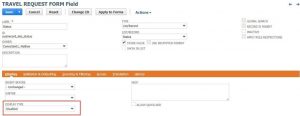Currently, there is a huge free tools offer that allow marketing automation. The problem is you end up having to manage multiple apps, access codes… and find time to unify the information into a single report and be able to measure results. More than that, you end up managing marketing in isolation, without linking it to sales, customer service…, so, to know return on investment, conversion from lead to customer or LTV (lifetime value) requires crossing different databases, increasing errors and time loss.
Marketing in the Business Strategy
Advantage of using NetSuite’s marketing automation is it does not require time to get report and insights, and all information is managed from a single system and a single database, giving you traceability of your contacts, from lead to client. Know what actions have better results, customise marketing and offers to customers, providing a powerful tool to your sales force to convert and manage cross-selling and up-selling.
In the sales funnel, we can distinguish two types of fundamental metrics. On the one hand, we have the marketing ones and on the other, their contribution to the company. Marketers usually tend to focus in marketing metrics showing progress and improvement, but no matter how impressive they may be, if they do not convert, they are just smugish metrics. Marketing must actively contribute to improve the sales funnel, not just attract visitors or improve time on page.
From marketing perspective as a tool to support the business strategy, we must design a plan that allows us to meet company goals. My recommendation is to start building marketing objectives in reverse.
Over-simplifying, suppose a B2B company, with a sales target of 15, a 1/20 conversion ratio from lead to customer, 3/1000 of impressions that show interest, of which 5% request more information or a demo. We would need 2 million impressions to obtain the expected results.

 Marketing Automation with NetSuite
Marketing Automation with NetSuite
In NetSuite, you can register, manage and control results of different marketing initiatives, both online and offline. You can create and send email marketing, send promotions and manage advertising campaigns.
NetSuite also lets you know your lead source, including which keywords have best return, or the return of a purchased list. In short, it provides all the tools and reports to manage and evaluate from a single system, all marketing related data important to your company.
Campaign Categories
Campaign categories represent the highest rank in campaign reports. Marketing campaigns are grouped into categories, depending on their type. By default, reports are grouped by category.
NetSuite has predefined categories and subcategories:
- Lists
- Direct Mail
- Phone
- Print
- Magazine
- Newspaper
- Online
- Paid Keyword
- Natural Keyword
- Online
- Broadcast
- Radio
- TV
- Webinar
Personally, I do not like it. I consider these categories and subcategories, by default in NetSuite, channels. Marketing campaigns should be comprehensive and include several channels to maximise impact.
As we have seen in the previous table, depending on the type of audience and their “information needs” the campaign categories would be:
- Institutional / Branding
- Product (different according to the life cycle)
- Educational
- Promotional
- Social
- Sponsorship
- Co-marketing
- BTL
The good thing about NetSuite is you do not have to adapt. You can
Configure your own categories:
- Go to Settings> Sales and Marketing Automation> Campaign Management> Campaign Categories> New
- Write the name of the Category
- If it is a subcategory – i.e. product launch would be a subcategory of a product campaign – indicate the category on which it depends
- Select the source that will be assigned by default if there is no other source associated with the lead.
- If you want the category to be visible to your customers – for example, when filling out an online form -, select “Available Externally”
- Save
Create a Campaign
Campaigns are “containers” that include all the relevant information to the marketing effort. You must set: the campaign time, dates in which it must be activated, target, cost and all important aspects. To create it:
Go to Campaigns> Marketing> Campaigns> New.
 In Primary Information block:
In Primary Information block:
Enter a campaign ID: You can either generate it automatically, or create your own. For example, a seasonal campaign with a promotion: “Spring Promo’18 – 20% online discount”
Campaign ID’s are very useful when identifying actions, especially if they are similar.
- Enter a campaign title.
- Select the category to which it belongs.
- Assign a responsible person. It will be the person who will receive the email confirming that the actions have been activated.
- Select a campaign start and end date.
- In the Base Cost field, enter the cost. In my case, the expenses in creativity/design go in this section. You can load the specific cost of the media -channel- in the Other Events section. The Total Cost field shows the sum of all the costs of the different events plus the base cost.
- In Expected Income, enter the expected return.
- If it is an online campaign, enter the URL of the landing page or the customer form associated with the campaign.
- Enter a description.
Under the Related Information block:
- In the Vertical field, select the sector, if any, to which the campaign is directed.
- Select the product/service associated with the campaign.
- Check the promotion, if any, associated with the campaign.
- Choose the audience in the Audience Description field
Save
You already have your “container” created. Now you can configure the different actions, keywords, add files and other related information.
In our next article on how to manage marketing from NetSuite we will tell you how to create the different events for a campaign. Subscribe to our newsletter to stay tuned.
I hope you have enjoyed reading and have seen how easy and intuitive NetSuite is to manage marketing.
If you enter the report tab and select marketing, you will see there are preconfigured reports. They can be modified according to your preferences or create new ones. See our article on how to customize KPIs and reports if you want to generate your own.


 Marketing Automation with NetSuite
Marketing Automation with NetSuite In Primary Information block:
In Primary Information block:








